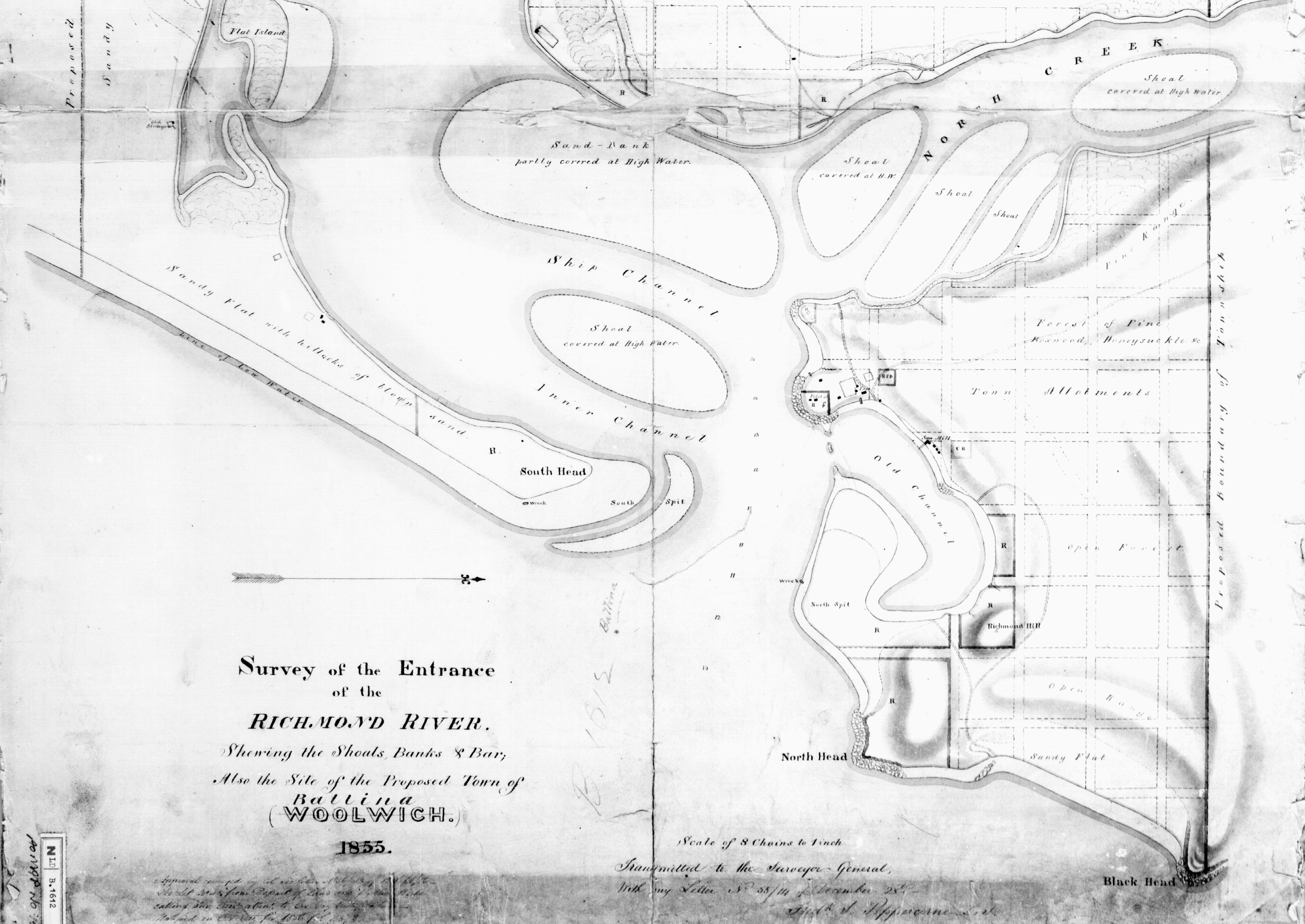
4 minute read
Bundjalung custodianship of the North Creek catchment
Before Europeans arrived on the Richmond River, and took up the land located along and away from its banks, the entire district was inhabited and cared for by families that belonged to the Bundjalung peoples and Nation. The North Creek, and its surrounding environment, was of enormous importance to the historic Bundjalung families who cared for, and sustained a living from, this landscape. Today it is recorded that the Bundjalung people occupied the creek’s catchment from, at least, 4000BC – that is for over 6000 years.1
The environment of the North Creek, with its tidal and salty properties, has long been the breeding ground of numerous types of fish and other estuary species. For generations Bundjalung families have hunted and gathered animals and other wild food from within and near the Creek. The vast kitchen midden, which once stretched for hundreds of metres along the bank of the Creek and is predominantly made up of oyster shell, is testament to the routine use of the Creek by Bundjalung families over countless decades, and hundreds of years. 2 Only a remnant of this midden remains intact today.
Today also the North Creek and its catchment is understood to be an ecosystem, wherein its various parts – the water that flows over its bed, the plants (or flora) that grow in, along and beside it, or the fauna (or animals) that are supported by it – work together to support its whole. The Bundjalung people viewed the creek, its surrounding environment, and their relationship to the landscape in this way; their interaction and relationship with the creek, and its environment, were an integral part of its cycle. To this end the Bundjalung people were careful, in a planned and systematic way, of what they took from the environment – to ensure that the fauna on which they relied for food continued to breed and prosper; or the plants also used for food or making utility goods such as baskets and fish nets was harvested within the limits learned across the generations. These limits took into account other potential threats to the environment, and what it could provide, such as droughts and floods. Knowledge of the environment, its bounty and processes of seasonal and other changes that shaped it, were recorded and handed on through the oral traditions of storytelling and song, as well as through other daily routines and ceremonial practices. 3
The Bundjalung people read and responded to the environment in countless ways. ‘The seasons were known to them by and flowers …. they could tell by natural signs of flowers and fruits when the salmon and the mullet were due on the beaches and in the rivers [or creek], and when certain game [land dwelling animals] …was bound to be in evidence in particular localities.4 The environment of North Creek, shaped by the ebb and flow of the tide that altered the water level daily and, over longer time periods, formed and altered the natural sand shoals on its bed, gave rise to the formation of permanent traps and the use of the specialised tow-row to catch fish by the families that here. Used in shallow waters the tow-row was crafted from (lawyer) cane and twine made from the inner-bark of the Currajong tree, which grew within the confines of the creek. 5
Nets were also used to capture ground dwelling species such as paddy melons and bandicoots. This game was herded into a long fence-like net-trap
1 Keats, N.C. 1988, Wollumbin: The Creation and Early Habitation of the Tweed Brunswick and Richmond rivers of N.S.W., The Book Printer, Woy Woy, New South Wales 2 OYSTER SHELL MOUNDS AT NORTH CREEK (1925, September 16). Northern Star (Lismore, NSW : 1876 - 1954), 7. Retrieved October 5, 2018, from http://nla.gov.au/nla.news-article93606064 3 Isabel McBryde, Records of Times Past: Ethnohistorical essays on the culture and ecology of the New England tribes, (Canberra: AIATSIS 1978). 4 James Ainsworth & Thomas Russell, Reminiscences: Ballina in the early days 1847-1922, Ballina NSW, 1988, 45. 5 Ainsworth, 43
by men of hunting age, loyally assisted by their dogs or dingos. The environment of North Creek also harboured flying fox that were nabbed from trees with the precise thrust of a boomerang. Yams were dug from its banks with long and solid digging sticks, all manner of fruits were gathered and carried in baskets or dilly bags, which were also crafted from fibres sourced from this environment. From along the beach, not far from the Creek, the pandanus fruit was harvested and processed to leach its harmful toxins and ground into flour from which a nutty bread was cooked, to supplement other foods prepared.6
And though the Bundjalung of this immediate environment routinely lived in small bands of extended family groups they also came together to have much larger gatherings, including when certain foods were in abundance. Early European settlers in the area witnessed and recorded such meetings at Chickiba Lake, when oysters were in abundance.
6 Ainsworth.
Plan of Richmond River Heads made in 1887. The image shows the junction of the main River and North Creek - a key landmark highlighted is the location of the Pioneer Cemetery. NSW Public Works Department.











